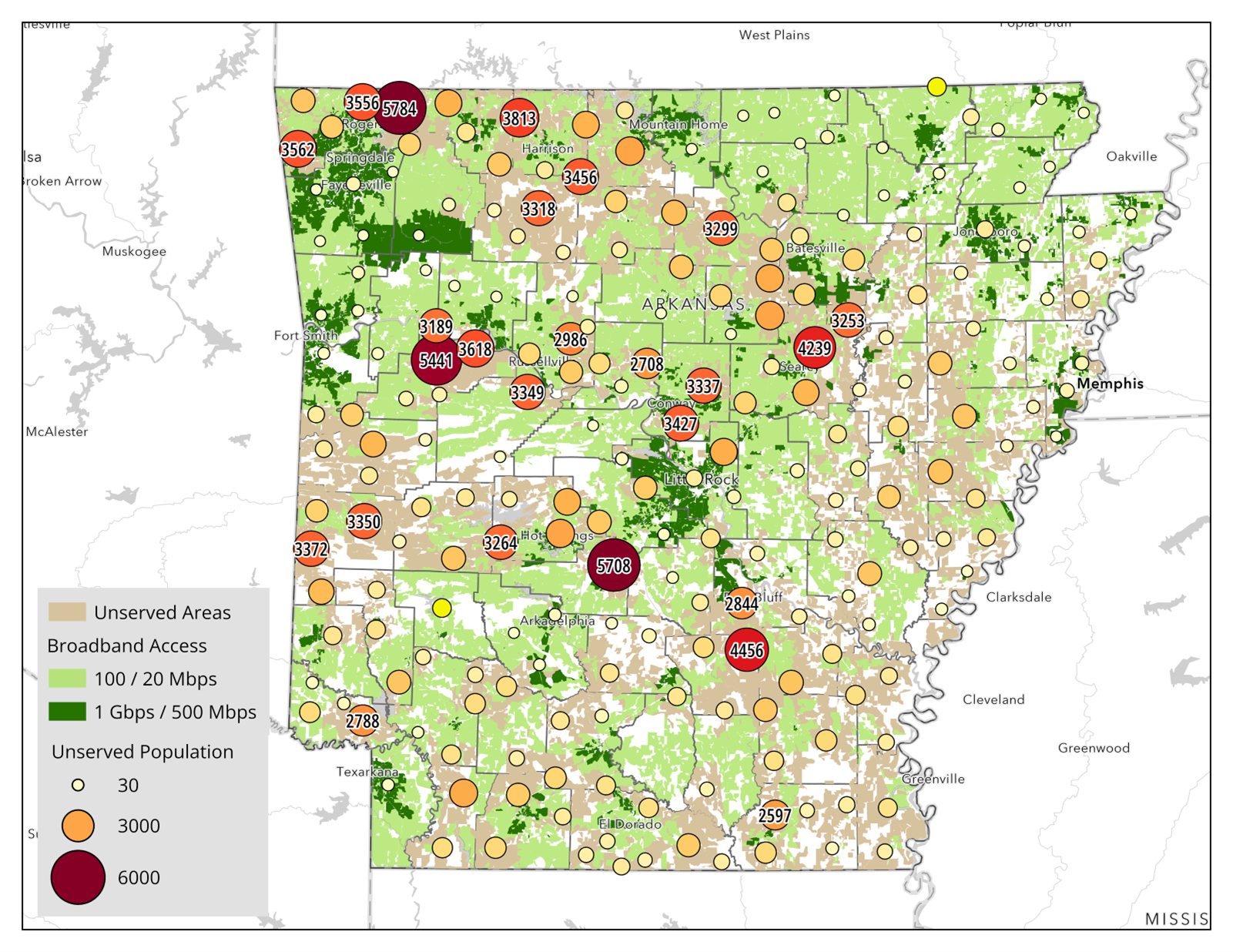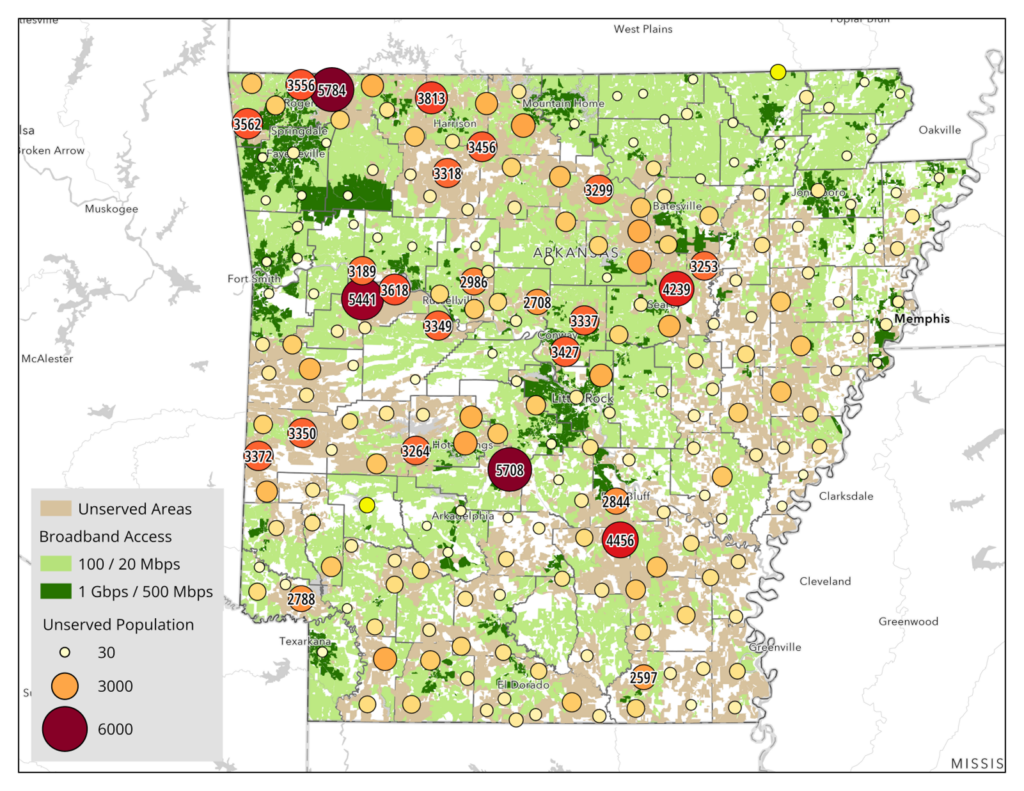March Map of the Month

By Grace Parker

Source: Federal Communications Commission
In today’s interconnected world, broadband is not a luxury; it is a necessity. Broadband influences many facets of life, from access to education to employment opportunities and even health. Access to broadband is also critical to monitoring and reducing residential energy use. Many energy technologies, such as smart thermostats and smart meters, require broadband connectivity to function, while most energy assistance programs rely on online applications for aid. Households that have limited access to broadband can find it more difficult to make use of energy efficiency assistance and have fewer tools to monitor and reduce home energy use.
Drawing on data from the Federal Communications Commission (FCC) this month’s map shows the population in Arkansas without high-speed broadband access. Arkansas has about 251,000 households who lack adequate broadband access. At 14.3% of the state’s households, it’s one of the highest rates in the United States. That number increases to 17.4% when you account for those who have access to broadband infrastructure but do not have a subscription, likely because of affordability challenges. This problem extends across the South, with a 2009 report finding that the South had the lowest rate of broadband use and the greatest urban-rural divide.
The FCC defines high-speed broadband as 100/20 megabits per second (Mbps), or 100 Mbps of download speed and 20 Mbps of upload speed. The FCC also set a nationwide goal of 1 Gbps/500 Mbps, which is currently only available in urban parts of Arkansas. This map likely underrepresents the population unserved by high-speed broadband since all the residents of a census block are considered served if anyone within it has access.
The map highlights the difficulty broadband providers face in reaching rural areas, showing how, across the state, there are small, dispersed groups lacking broadband that will require significant investments in infrastructure by providers. Meanwhile, there are larger groups in more populated areas that still lack broadband access, which are more likely to be economical investments for providers.
The lack of high-speed broadband and the energy efficiency measures it enables contribute to a concentrated disadvantage. Nationally, rural energy burdens are 40% higher than those in urban areas. Since most smart energy-saving devices communicate through the home’s broadband, these households have fewer opportunities to monitor and reduce their energy use. Energy assistance information and applications for programs such as the Weatherization Assistance Program (WAP) and utility offerings are often online, making it more challenging for these households to pursue energy efficiency upgrades.
The Department of Commerce is investing over $1 billion in Arkansas and $12.8 billion in the Southeast as part of the “Internet for All” initiative, but some stakeholders and experts have expressed skepticism that this will be sufficient for making broadband universal. Electricity-broadband partnerships are one way to make the funding go further. These partnerships are expanding broadband coverage in the Southeast by sharing infrastructure, making it more cost-effective for broadband providers to reach dispersed populations. These partnerships include investor-owned utilities like Entergy and Alabama Power and many electric cooperatives. Electricity access – which is nearly universal in the United States from an infrastructure standpoint – far outpaces that of broadband, in part due to the work of electric cooperatives created to expand service into rural areas. These intersectional partnerships will be crucial to reaching the rural Southeast.

